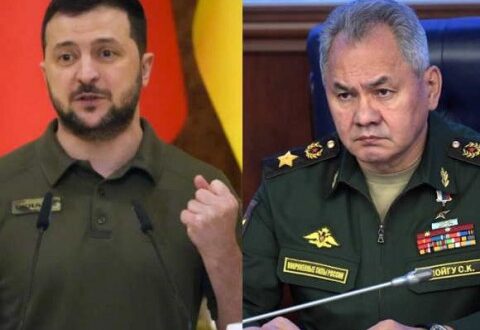
More than 10 months have passed since Russia’s invasion of Ukraine on February 24th, and the conflict is still ongoing. No one knows when it will end, but today, the conflict is entering a new phase called “the Winter War,” as snow begins to fall alongside thick mud and frigid temperatures, complicating the battle for both sides. A similar fate befell the invading troops of Adolf Hitler’s Third Reich in the Winter of 1941–42, just as the coming winter of 1812–13 compelled Napolean to flee from Moscow and from which the Grande Armee never completely recovered.
History of Russia’s Winter War
For as long as history records, the brutality of a Russian winter has been enough to stop the advance of an opposing army, and the Russian winter has frequently helped the Russian warriors to hold their position and destroy an approaching adversary. The climate of Russia, sometimes personified as “General Frost” or “General Winter,” is credited with helping to make the country strategically advantageous and with playing a role in the failure of several military and covert invasions intended to take Russia by surprise. The “General Winter” has been a significant contributing element to every invasion plot against Russia, from Napoleon to Hitler. Over the course of the numerous conflicts and wars the Russian army has fought in the winter, the erratic “General Frost” has often proven to be a valuable partner, lending a hand to Russian soldiers. The Russians have used the severe harsh environment to their advantage in many wars and against many enemies, including the Napoleons, in 1812-13, the Finns in 1939-40, and the Germans in 1940; and the stories of how the harsh winters have impacted the other side are also very famous, for example -: The severe frost which took a dreadful toll on the ill-prepared. It was also the Russian army’s surprise crossing of the icy Gulf of Bothnia from Finland to Aland on March 19, 1809 that ultimately determined the fate of the Finnish War and brought them to within 70 kilometres (43 miles) of Stockholm, the Swedish capital. Russia has always trained its soldiers to train, as it yearly exercises its combined troops during the colder months. Under short notice in 2013, it held more than four winter exercises. Far Eastern Higher Combined Arms Command School in Blagoveshchensk, Amur Oblast, eastern Russia is often the site of such training. The school’s goal is to train Russian soldiers for combat in harsh environments including the mountains, snow, and the Arctic.
Russia-Ukraine Conflict and Winter
After ten months of intense fighting, Russia and Ukraine have entered the “Winter War” phase, marked by thick mud, frigid temperatures, and snowfall that will help in complicating the battlefield for both sides. Many western critics have begun pointing out that the Winter will be a useful ally to the Ukrainians, and the United States, Canada, the United Kingdom, and many other countries have already begun providing military aid to the Ukrainians. TIU Canada, a solar energy company in Ukraine, is just one of several enterprises that have helped the country’s less fortunate with donations of necessities like flashlights, medical kits, and other items. The West hopes that its aid to the Ukrainians will turn the tide of the conflict and help them defeat the Russians this winter, or at least help them survive the winter. The reality, however, is very different; the West has only begun supplying the Ukrainians with aids like supplying generators and all within the past couple of weeks, while the Russians have been preparing for the “Winter phase” of the war for months.
Which proves once again that winter is Russia’s most reliable friend. For weeks, every major city in Ukraine has been hit by Russian air missiles or drone strikes on its power plants. Donbas and Kherson, two regions where the Ukrainian army has been fighting the Russian army, have lost their power grids in the fighting. Many of the large power generating plants that operate in Ukraine are in the occupied areas; for example, the plus 6 GW plant by the Zaporizhzhia Nuclear Power Plant is in Russian possession and was recently put into a cold shutdown state due to the conflict. Additionally, more than 90% of wind and more than 30% of so-called “so-called” hydropower have been cut off as a result of the fighting. Although the Ukrainian state energy company, Ukrenergo, has claimed that there is enough electricity to cover 80% of the country’s consumption, Ukrainian President Zelensky has also pleaded to the citizens “to not to increase the consumption at night,” highlighting a growing concern in Ukraine after a series of attacks and the onset of increasingly cold weather. Over past few weeks, Moscow has embarked on a keen and desperate mission to leave Ukraine without electric power, as without power, there will be no light or heat in Ukrainians’ homes, schools, offices, and without electricity, the food cannot be preserved, as the Russian President wailed. Moscow has been firing relentlessly, and has not only been using the missiles fired from planes, but has been intensifying the range of barrage of missiles from sea, batteries on land, as well.
 Geostrategic Media Political Commentary, Analysis, Security, Defense
Geostrategic Media Political Commentary, Analysis, Security, Defense





